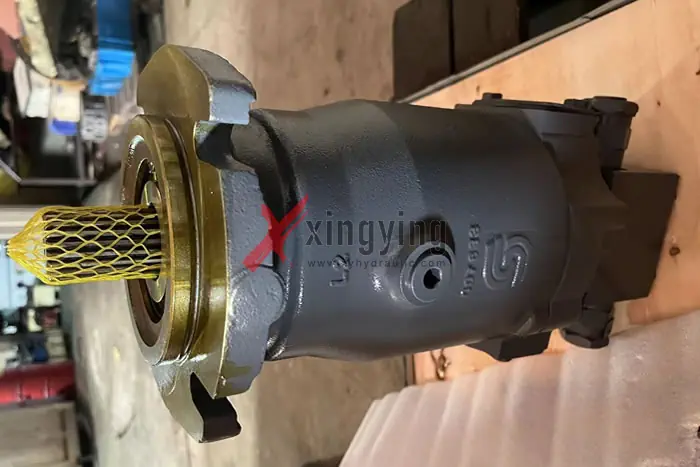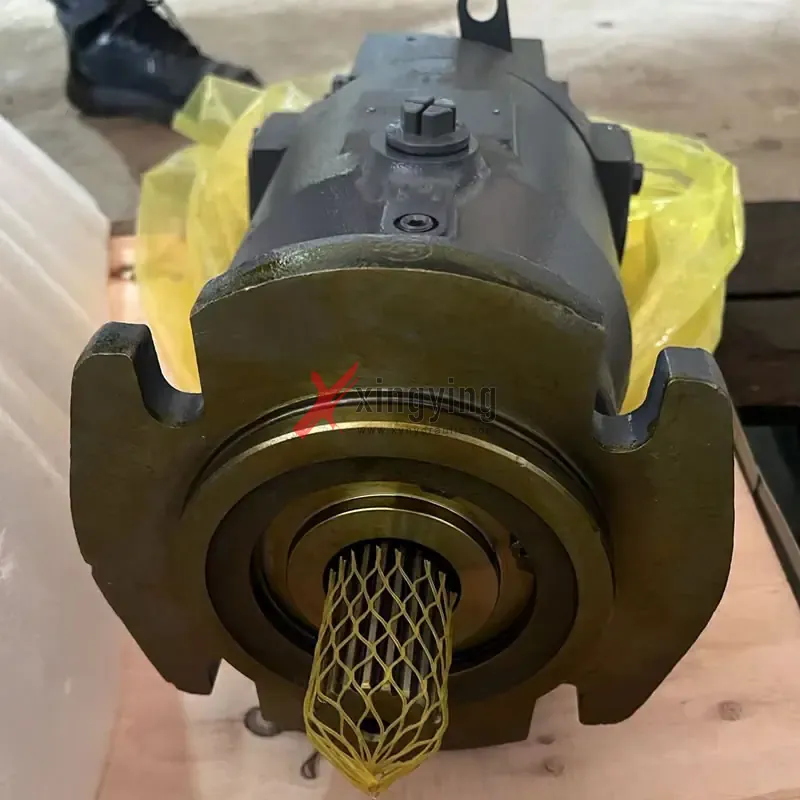Demystifying hydraulic motors: characteristics, classifications and 8 maintenance tips

From the perspective of energy conversion, hydraulic pumps and hydraulic motors are reversible hydraulic components
that can be transformed into Hydraulic Motor working conditions by inputting working fluid into any type of hydraulic pump;
On the contrary, when the main shaft of the hydraulic motor is driven by external torque, it can also change to the working condition of the hydraulic pump.
This article discusses the characteristics, classification, and maintenance precautions of hydraulic motors brought by Xingdiyuan Machinery.
1、 The characteristics of hydraulic motors:
From the perspective of energy conversion, hydraulic pumps and hydraulic motors are reversible hydraulic components that can be transformed into hydraulic motor working conditions by inputting working fluid into any type of hydraulic pump; On the contrary, when the main shaft of the hydraulic motor is driven by external torque, it can also change to the working condition of the hydraulic pump. Because they have the same basic structural elements - a sealed and periodically variable volume and corresponding oil distribution mechanism.
However, due to the different working conditions and performance requirements of hydraulic motors and pumps, there are still many differences between the same type of hydraulic motor and pump. Firstly, hydraulic motors should be able to rotate in both forward and reverse directions, thus requiring their internal structure to be symmetrical; The speed range of hydraulic motors needs to be large enough, especially with certain requirements for their minimum stable speed. Therefore, they usually use rolling bearings or hydrostatic sliding bearings;
Secondly, because the hydraulic motor works under the condition of input pressure oil, it does not have the ability of self-priming, but it needs some initial sealing to provide the necessary starting torque. Due to these differences, hydraulic motors and pumps are structurally similar but cannot work reversibly.
2、 Classification of hydraulic motors:
Hydraulic motors can be divided into gear type, blade type, plunger type, and other forms according to their structural types, and can also be divided into two categories based on the rated speed of hydraulic motors: high speed and Low Speed. A rated speed higher than 500/min belongs to a high-speed hydraulic motor, while a rated speed lower than 500r/min belongs to a low-speed hydraulic motor.
The basic forms of high-speed hydraulic motors include gear type, screw type blade type, and axial piston type. Their main characteristics are high rotational speed, small moment of inertia, easy starting and braking, and high sensitivity in adjustment (speed regulation and direction change). Usually, the output torque of a high-speed hydraulic motor is not large (only a few tens to hundreds of Newton meters), so it is also known as a high-speed small torque hydraulic motor.
The basic form of low-speed hydraulic motors is radial piston type, and there are also low-speed structural forms in axial piston type, blade type, and gear type. The main characteristics of low-speed hydraulic motors are large displacement, large volume, and low speed (sometimes up to a few revolutions per minute or even a few zeros), so they can be directly connected to the working mechanism without the need for a deceleration device, greatly simplifying the transmission mechanism. Usually, low-speed hydraulic motors have a large output torque (up to several thousand Newton meters to tens of thousands of Newton meters), so they are also called low-speed High Torque hydraulic motors.
Sauer MF22 MF23 MF24 MF26 MF27 hydraulic piston motors
3、 Precautions for the use and maintenance of hydraulic motors:
Hydraulic motors and similar hydraulic pumps have similar structures and working principles. From the perspective of energy conversion, the two are reversible. However, due to the different purposes and working conditions of hydraulic motors and pumps, their performance requirements are also different, and there are still many differences between the two.
The daily inspection of hydraulic motors mainly includes inspections of operating conditions, working media, operating sound, and motor temperature rise; The main content of disAssembly inspection is whether the components are damaged, engaged, cracked, and worn. The following are the usage and maintenance precautions for hydraulic motors:
1,The speed of the hydraulic motor should not be too low;
2,The oil discharge port of the hydraulic motor should be separately connected back to the oil tank;
3,When using a plunger motor for the first time, the housing should be filled with the working medium;
4,Necessary measures should be taken in the closed hydraulic motor circuit to ensure reasonable flow matching;
5,The viscosity of the working medium should not be too high or too low when starting the hydraulic motor;
6,Hydraulic motors that remain in a braking state for a long time must use brakes;
7,Avoid bearing radial forces on the shaft end of hydraulic motors;
8,The installation direction of the hydraulic motor drain pipe should be upward;
9,The oil outlet of the internal curve hydraulic motor should have a back pressure of 0.5~1MPa;
10,Hydraulic motors that start with load should be careful not to overload.
Why Choose XingYing Hydraulic as Your Supplier?
1.Direct from Manufacturer: Benefit from competitive pricing on top-quality hydraulic products, sourced directly from our factory in China.
2.Custom Solutions: Our expertise allows us to tailor hydraulic components to your precise requirements, ensuring optimal performance.
3.Reliable Supply: Count on us as your trusted supplier for consistent quality and timely delivery, backed by our reputation in the industry.
